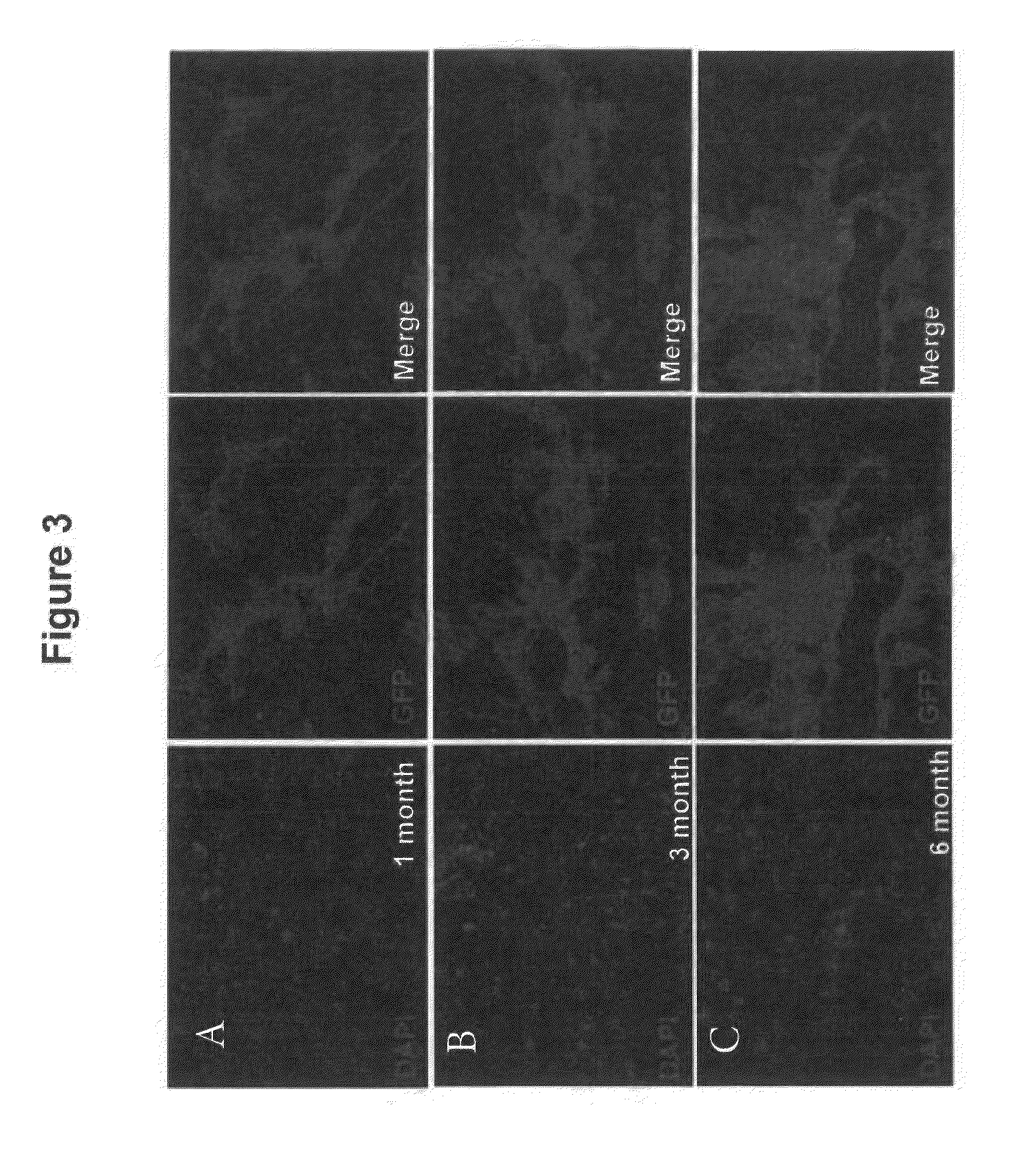Bone Marrow-Derived Cells Ameliorates The Pathological Consequences Of The Liver In Case Of Alpha1-Antitrypsin Deficiency
a technology of alpha1-antitrypsin and bone marrow, which is applied in the field of stem cell therapy, can solve the problems of end-stage pulmonary emphysema, limited current available treatment of genetic liver diseases, and the death of hepatocytes and liver damage, and achieve the effect of restoring normal function
- Summary
- Abstract
- Description
- Claims
- Application Information
AI Technical Summary
Benefits of technology
Problems solved by technology
Method used
Image
Examples
example 1
Isolation and Purification of the Lin− Cells
[0064]Lin− (CD5, CD11b, CD45R, 7-4, Gr-1, and Ter119-depleted) BMCs were isolated from C57B16 / J background eGFP transgenic female mice by magnetic cell sorter (Miltenyi Biotec., Germany) following a negative selection method. These mice express normal A1-AT, A total of 250,000 sorted cells were transplanted intrasplenically in PiZZ mice. Saline injected PiZZ mice were used as control throughout the invention.
example 2
Animal Surgery
[0065]All animal procedures were approved by the Institutional Animal Ethics committee (IAEC) of the National Institute of Immunology. Animals were anesthetized with intraperitioneal injection of Ketamin (100 mg / kg b wt) and xylazine (19 mg / kg b wt). An area of 2 sq. cm underneath the most caudal rib was shaved and was disinfected with iodine and alcohol. A pre-arranged ligation per animal using at least 25 cm of the surgical suture with knot was prepared. The abdominal cavity was carefully opened with small scissors and the skin lifted with straight forceps to locate the spleen. Forceps were used to lift the spleen by grasping the adipose tissue adherent to the spleen. A pre-arranged ligation was placed over the spleen and the wooden end of a cotton applicator was pressed between the adherent adipose tissue and the spleen to expose the organ during the injection of the cells. The ligation was wound around the spleen, the end of the suture was held and the spleen was l...
example 3
Presence of Donor Cells in the Recipient Mice
[0066]Immunohistochemical identification of the donor derived cells i.e GFP cells were quantitatively determined by examining the IHC sections. Cryosections of 5 μm were prepared from the recipient mice 1, 3 and 6 months after transplantation. Tissue were fixed with 4% paraformaldehyde in phosphate buffered saline and kept overnight in 30% sucrose solution before sectioning. Sections were first blocked with 1% BSA for 30 min at room temperature and permeabilized with 0.1% Titron X-100 for 30 min at room temperature. The sections were washed with PBS and incubated with primary anti-GFP antisera overnight at 4° C. The antisera were rinsed-off with PBS and the sections were incubated with the respective secondary anti-sera for 1-2 hours at room temperature. Sections were then washed with PBS and DAPI was added for nuclear staining, incubated for 5-10 min. Again slides were washed once with PBS and sections were covered using a cover slip con...
PUM
 Login to View More
Login to View More Abstract
Description
Claims
Application Information
 Login to View More
Login to View More - R&D
- Intellectual Property
- Life Sciences
- Materials
- Tech Scout
- Unparalleled Data Quality
- Higher Quality Content
- 60% Fewer Hallucinations
Browse by: Latest US Patents, China's latest patents, Technical Efficacy Thesaurus, Application Domain, Technology Topic, Popular Technical Reports.
© 2025 PatSnap. All rights reserved.Legal|Privacy policy|Modern Slavery Act Transparency Statement|Sitemap|About US| Contact US: help@patsnap.com



